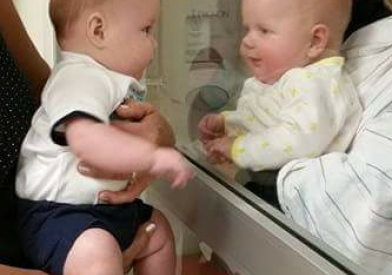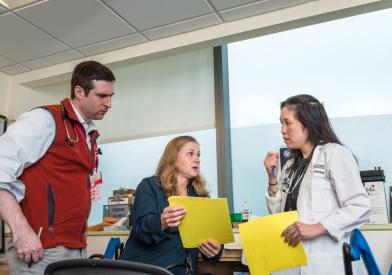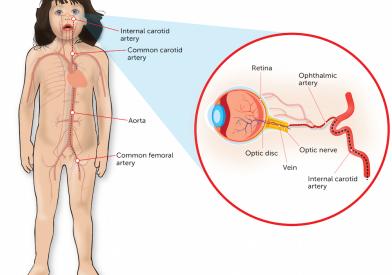About the Childhood Retinoblastoma Program
Retinoblastoma is an eye tumor that affects young children, typically before 5 years of age. With an accurate diagnosis, more than 95 percent of children will successfully recover from the disease.
The Retinoblastoma Program at Dana-Farber/Boston Children's Cancer and Blood Disorders Center offers the latest in diagnosis and treatment options, as well as access to a wide range of pediatric subspecialists to help children diagnosed with retinoblastoma manage the rigors of treatment, and effectively transition back into their lives.
How We Diagnose and Treat Childhood Retinoblastoma
Our doctors will start with a comprehensive eye exam while your child is under anesthesia. We take this approach to ensure that the doctor can carefully examine the complete eye.
After the examination, your child's doctor will order several advanced imaging scans to investigate the eye further. They may also recommend that you meet with genetic counselors to discuss taking a blood sample that looks for the abnormal retinoblastoma gene.
After testing is complete, the doctor will determine the number, size, location, and spread of the tumor(s) and develop a treatment plan. Most children respond well to treatment and retain sight in the affected eye.
Treatments may include:
- Chemotherapy: We are typically able to treat retinoblastoma with a promising new form of chemotherapy known as intra-arterial chemotherapy. The specialist will inject chemotherapy directly into one of the eye's main blood vessels rather than into the body. This approach requires fewer treatments and causes fewer side effects. We also use systemic chemotherapy and intravitreal chemotherapy.
- Surgery: If the tumor does not respond to other treatments, we may need to perform surgery on the eye.
- Focal therapy: We use cryotherapy (cold) and thermotherapy (heat) to treat small tumors.
- Radiation therapy: Doctors may use external radiation or targeted radiation with plaque brachytherapy.
- Stem cell transplant: For the rare patient with metastatic disease, high-dose chemotherapy with stem cell transplant is an option that we can provide.
Once the treatment is complete, we will connect you with our pediatric survivorship programs. Through these programs, we will continue to monitor your child's health and well-being.



